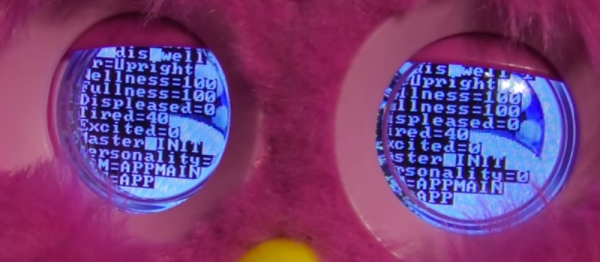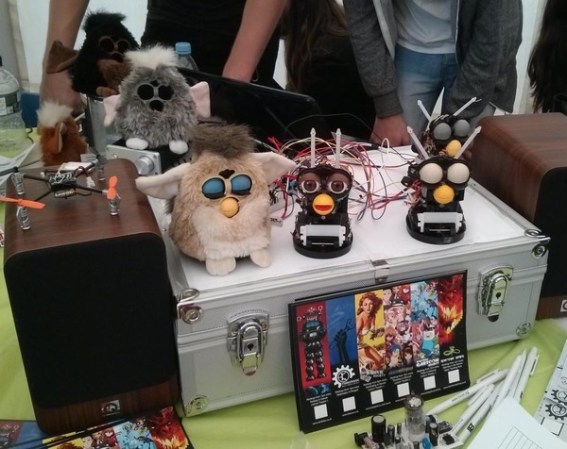Furbys have been around for a while and they are an interesting (if annoying) toy that will teach the kids to be okay with their eventual robotic overlords. In the meantime, the latest version of the robotic companion/toy/annoyance uses Bluetooth LE to communicate with the owner and [Jeija] has been listening in on the Bluetooth communication, trying to reverse engineer the protocol in order to run code on Furby.
[Jeija] has made a lot of progress and can already control the Furby’s actions, antenna and backlight color, and change the Furby’s emotional state by changing the values of the Furby’s hungriness, tiredness, etc. [Jeija] has created a program that runs on top of Node.js and can communicate with the Furby and change its properties. [Jeija] has also discovered, and can bring up, a secret debug menu that displays in the Furby’s eyes. Yet to be discovered is how to run your own code on the Furby, however, [Jeija] is able to add custom audio to the official DLC files and upload them into the Furby.
[Jeija] points out the all this was done without taking a Furby apart, only by sniffing the Bluetooth communication between the robot and the controlling app (Android/iOS device.) Check out a similar hack on the previous generation of Furbys, as well as a replacement brain for them. We just hope that the designers included a red/green LED so that we will all know when the Furbys switch from good to evil.


















